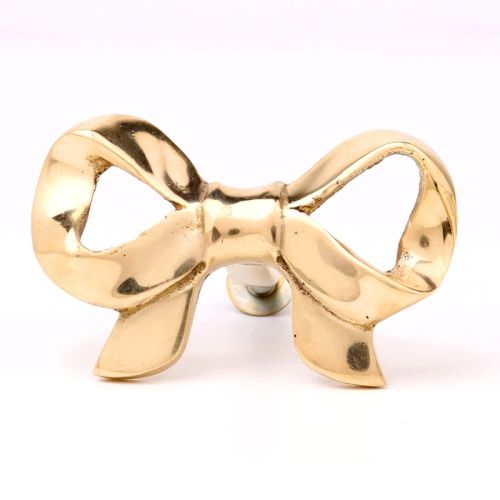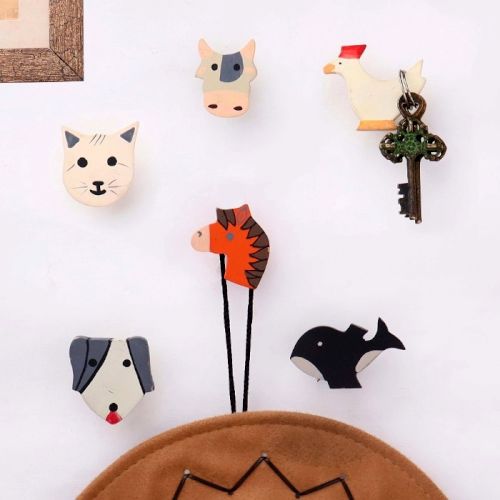-
Virat Kohli – Realistic Pencil Portrait Art on Paper by Artist Dimpana | 8 x 12 Inc...
- ₹ 1,500.00
- 1 In Stock
-
TEARY EYE – Realistic Pencil Sketch Art on Paper by Artist Dimpana | 14 x 10 Inches
- ₹ 1,200.00
- 1 In Stock
The Timeless Power of Sketch Paintings
Sketch paintings aren’t always clean. They’re gestures, often restless, sometimes accidental, always alive. Unlike finished compositions, sketch paintings breathe between the lines, celebrating incompletion as an art form. Whether born in a studio or on the corner of a napkin, they serve not only as drafts but often as declarations. A sketch painting doesn't shout, it murmurs, leaving enough space for the viewer to lean in, observe the marks, and sense the artist's hand in motion. They aren’t obsessed with perfection but with presence, transient, tactile, and often emotional. They carry the artist’s first breath.
What Is A Sketch Painting?
A sketch painting is a raw outpouring, an intimate translation of thought into form using minimal lines, strokes, and gestures. It’s not always meant to be perfect, it’s meant to be felt. Sketch paintings can exist as unfinished drafts or as stand-alone works, capturing the first heartbeat of an idea. They’re often created in mediums like charcoal, ink, graphite, or light watercolor, allowing room for smudges, erasures, and spontaneous textures. Think of them as visual murmurs, loose, quick, intuitive. They speak of spontaneity, revealing an artist’s process more than their perfection. Unlike refined artworks, sketch paintings don’t wear a mask. They are vulnerable, immediate, and grounded in the now. This directness is what gives sketch paintings a pulse, viewers feel they’re witnessing something personal, unfiltered, almost sacred. It’s art in its most primal conversation with self.
What Emotions Or Themes Do Sketch Paintings Commonly Portray?
Sketch paintings thrive in the space between intention and instinct. That’s why they often carry elusive, layered emotions, solitude, motion, stillness, even unresolved chaos. They echo the artist’s inner atmosphere. There’s no elaborate brushwork to distract, instead, what remains is raw honesty. Themes often orbit around temporality, moments that pass, feelings that flicker, bodies in motion, emotions unsettled. You’ll notice longing in the unfinished lines, rebellion in the erratic gestures, and sometimes even peace in the sparse space between marks. Sketch paintings don’t demand emotion, they suggest it. Sometimes, they feel incomplete by design, evoking a sense of what’s missing, what could be. They linger in ambiguity, asking the viewer to complete them emotionally. Whether it’s the rough tilt of a figure or the half-sketched gaze of a face, there’s always something reaching out, inviting contemplation, not conclusion. That’s where their emotional power lies, not in completion, but in suggestion.
What Are The Most Recognized Styles In Sketch Painting (E.g., Gesture, Contour, Tonal)?
Sketch paintings manifest in various stylistic languages, each unlocking different tactile and emotional textures. Gesture sketches are kinetic, almost dance-like. They prioritize motion over form, capturing the energy and essence of movement. A figure leaping, a dancer pausing mid-turn, these sketches translate time into visual rhythm. Contour sketches, on the other hand, are all about structure. With confident, unbroken lines, they outline the subject’s shape, tracing form with observation and control. They’re more meditative, less impulsive. Then come tonal sketches, where shadow plays the protagonist. Built through gradients, layering, and softness, tonal sketches sculpt depth, offering atmospheric mood and volume without detailing every edge. These styles aren’t rigid categories, they often overlap. But each offers a specific lens, energy, form, or light. Together, they let the artist sculpt reality without finishing it. What binds them is their unfinished spirit, a commitment to presence rather than polish.
Why Are Sketch Paintings Still Revered In The Contemporary Art World?
In an era of digital polish and hyper-production, sketch paintings hold onto something sacred, the raw, unedited soul of the artist. They reveal process over perfection, intention over execution. Contemporary artists and viewers gravitate toward this honesty. A sketch painting doesn’t pretend, it tells you exactly where the hand slipped, where the mind hesitated, and where the heart spoke without filter. That kind of vulnerability is magnetic. It’s a reminder that creativity isn’t always clean. Many contemporary galleries feature sketch works not as prep pieces, but as art forms in their own right. They symbolize transition, risk, and the intimacy of beginnings. Artists like Egon Schiele, Cy Twombly, and Tracey Emin embraced this quality, using sketches to expose the emotional undercurrent beneath technique. Even in design thinking and concept development, sketches are honored as the DNA of creation. In short, sketch paintings make space for truth, and that’s always in vogue.
Techniques, Mediums & Artistic Tools for Sketch Paintings
Sketch paintings thrive in immediacy, each mark a reaction, not a deliberation. Artists use sharp graphite for precision, charcoal for drama, ink for fluidity. The surface becomes a stage for unfiltered gestures: smudged outlines, quick crosshatches, tonal experiments. Tools aren’t just tools, they’re extensions of thought. A blunt pencil can soften contours, a dry brush can suggest fragility, and a fine-tipped nib can anchor attention. Sketching isn't about perfection but presence. There’s something honest in seeing the anatomy of creation, the erased lines, the bleed, the moment an artist chose not to refine. It's instinct over polish, spirit over spectacle.
How Were Sketch Paintings Traditionally Created?
Sketch paintings were traditionally created as preliminary studies, mental rehearsals, or captured impressions. Artists worked fast, using tools like charcoal, ink, chalk, or metalpoint on readily available paper or parchment. These tools allowed for dynamic expression: charcoal enabled broad strokes and rich blacks, graphite allowed control over line weight, ink offered permanence and confidence. Many classical artists began with a quick gestural sketch to map the composition, then deepened the lines, added shadows, or enhanced figures with white chalk for highlight. These sketches were never just drafts, they were visual thinking, raw observations of life or imagination unfolding on surface. Often portable and intimate, they offered insight into an artist’s private process, emotion, and evolving vision. Renaissance masters like Leonardo da Vinci or Michelangelo treated sketching not as a side practice, but as a vital layer of their artistry.
What Painting Mediums Were Commonly Used In Sketch Eras (E.g., Charcoal, Pencil, Ink Wash)?
Each medium carried its own voice. Charcoal, bold, dusty, emotional, excelled in evoking atmosphere. It blurred easily, letting artists carve out light by subtraction. Pencil, precise and versatile, offered subtlety in shading, control in anatomy, and room for revision. Ink wash, by contrast, introduced tone and drama. Diluted ink gave birth to gradients and moods, often paired with calligraphic linework. Red chalk (sanguine) provided warmth, conté offered dense blacks without smudging. Pen and ink demanded decisiveness, there was no going back. Artists chose their medium like actors choose costumes, based on what the story asked for. Whether sketching a bustling market or a quiet self-portrait, the material shaped the message.
What Role Did Paper, Boards, Or Fabric Play In Sketch Art?
The surface is not neutral, it shapes the language of a sketch. Rough paper caught charcoal and held it like memory, adding texture to movement. Smooth vellum let graphite glide, ideal for detailed anatomy or facial studies. Toned paper created instant midtones, allowing white chalk to highlight and black lines to anchor. Wooden boards supported more durable compositions, sometimes serving as both sketch and final work. Linen or canvas, usually reserved for paintings, occasionally bore sketchy underdrawings, ghost maps beneath oil layers. Even papyrus and parchment offered different absorption rates. The choice of surface affected drag, smudge, absorption, and visibility. Texture became tone, grain became gesture. Every scratch on a fibrous page spoke differently than a clean stroke on slick board. The canvas of sketch wasn’t just passive, it was a collaborator in the visual dialogue.
Artistic Intent and Visual Storytelling of Sketch Paintings
Sketch paintings aren’t loud, they whisper. They capture the in-between, the breath before speech, the thought before word. Artists don’t just draw a figure, they question it. They hint at movement, pause at expression, leave something undone. This incompletion invites the viewer into the process. A curled toe, a bent knee, a half-glanced gaze, each element feels like a sentence mid-written. Sketches carry moods more than messages. They hold tension. They’re often not about clarity but curiosity, not conclusion but exploration. In their rawness lies their power, an intimacy that finished works sometimes lack. They’re process, but they’re also poetry.
What Stories Or Messages Did Sketch Paintings Aim To Convey?
Sketch paintings communicated immediacy, emotion, and exploration. Unlike completed works bound by polish and perfection, sketches allowed the artist to think aloud visually. They told stories in fragments, an arched back suggesting pain, a falling robe hinting at vulnerability, an unfinished face radiating longing. Some sketches were mere anatomical studies, but even then, they whispered of struggle, discovery, and gesture. Others mirrored scenes from life, crowded markets, intimate lovers, soldiers in waiting, rendered in lines that felt like fleeting memories. They also served as private notations of larger themes, human condition, movement, form, and rhythm. Sketches made room for the viewer’s imagination, asking them to participate in storytelling. They weren’t about telling a story fully but about evoking the space for one. Every line became a question rather than an answer.
How Did Artists Express Political, Spiritual, Or Cultural Symbols Through Sketch Art?
Sketches often slipped messages past the censors. In sketchbooks and studies, artists embedded symbols, some overt, others subtle. A chained hand might reference slavery, a weeping eye could allude to loss or injustice. Spiritual sketches used halos, prayer gestures, or divine light rendered with minimal strokes. Cultural codes were embedded through attire, posture, tools, or landscape, each signifying time and place. Because sketches were seen as preliminary, they gave artists freedom to experiment with dissent or devotion. Political resistance, for example, could take the form of exaggerated figures or hidden metaphors, avoiding direct scrutiny. A bowed figure could simultaneously express grief and protest. The simplicity of sketching enabled complexity of message. The absence of color made symbols bolder. Sketches, in essence, were quiet revolutions, messengers in pencil and ink, slipping truth into the world unannounced.
How Do Light, Shadow, And Linework Influence The Mood Of Sketch Paintings?
Mood in sketch art is born through tension, between presence and absence, detail and gesture. Light, often introduced by erasing or white chalk, brings figures forward, highlighting expression, texture, or movement. Shadow, created through dense hatchings or broad strokes, builds weight, depth, and mystery. Together, they sculpt emotion, suggesting silence, struggle, serenity, or chaos. Linework adds another layer: a sharp line implies focus, a trembling stroke, vulnerability, a swirling one, energy. The spacing between lines tells of breath, rhythm, even heartbeat. Sketches, limited in palette, lean heavily on these tools to create drama and draw viewers in. The artist controls mood not through color but through balance, how much to leave, how much to show. That dance of light, shadow, and stroke becomes the silent music of the sketch, composing a symphony of feeling in monochrome.
Purchase, Collection & Investment of Sketch Paintings
Sketch paintings aren’t just drawings; they’re the first breath of a thought. Collecting them feels like holding a piece of the artist’s heartbeat, raw, unfiltered, and instinctive. Whether it’s a quick contour of a stranger or a study of a landscape never returned to, sketches invite you to look at the process, not just the result. Purchasing one is not about perfection, but about pause, what made the artist stop and draw this? Their irregularities, looseness, even the unfinished edges are what make them perfect to collect. And when you hang one in your space, you aren't showing off a product. You're letting people see a moment caught mid-motion.
Where Can You Buy Authentic Or Reproduction Sketch Paintings?
Authentic sketch paintings can be found in curated places that value process over finish, art galleries, artist residencies, independent pop-ups, and craft fairs often hold rare gems. Online platforms like IndianShelf, Saatchi Art, Artsy, or even Etsy (with proper scrutiny) offer access to both originals and high-quality reproductions. But look beyond the gloss, follow the artist’s social media trail, exhibitions, or statements. Some of the most heartfelt sketches come from emerging artists who aren’t loud online. Trust platforms that share provenance, creation details, and artist background. Choose with your gut, not trend. If it lingers in your mind, it’s worth exploring. Remember, the soul of a sketch isn’t in perfection, it’s in what it risks revealing.
How Can You Verify The Authenticity Of A Sketch Painting?
Every line in a sketch tells more than it hides. To verify authenticity, observe the pressure of strokes, real sketches often show gradation from hesitant to confident lines. Paper matters: handmade, cotton, or acid-free variants hold age differently than synthetic. Look for signatures, pencil indents, or artist notations. But most importantly, check provenance. Ask for its history, exhibition records, or even a simple certificate. In older works, paper yellowing should feel organic, not forced. A curator or conservator can spot reproductions that mimic age. And always trust the language of the lines, machine-made prints often lack the irregular tremble of human hands.
What Makes A Sketch Painting A Worthwhile Investment?
Sketch paintings aren’t made for galleries, they’re made in silence, in thought, in between bigger pieces. That’s what makes them rare. These works offer the truest version of an artist’s psyche, unsanitized, intimate, vulnerable. An investment in a sketch is an investment in the artist’s method, not just their product. Over time, sketches from renowned or emerging talents often increase in value due to their scarcity and originality. But beyond financial worth lies narrative value. Sketches reveal the first step of an idea, the bones beneath a masterpiece. You’re not just buying art. You’re investing in the invisible hours behind it.
Care, Framing & Preservation of Sketch Paintings
Sketches age just like us, quietly, and with stories in every fold and fade. Caring for them requires a gentleness that matches the art’s intent. Store them away from sunlight, never folded, and avoid contact with acidic materials. Use gloves when handling aged sketches. Let them breathe between acid-free sheets or archival mounts. They don’t need elaborate climate chambers, just consistent, dry, and calm spaces. Think of each sketch as a fragile conversation between artist and moment. Your job isn’t to interrupt it. It’s to preserve the silence around it.
How Do You Properly Store And Maintain A Sketch Painting?
Store sketches flat, never rolled, in acid-free folders or museum-grade portfolios. Keep them in dark, temperature-controlled environments away from direct sunlight, moisture, or pollutants. If displayed, rotate their exposure, don’t leave the same sketch hanging under harsh lights for years. Use UV-protective glass when framing. Avoid touching the surface with bare hands, the oil from skin causes long-term damage. Sketches require stillness, not just space. Maintenance is more about not doing, no over-cleaning, no aggressive sealing. If framed, keep a small distance between glass and paper with a mat board to prevent condensation and stickiness. Less is protection.
What Frames And Materials Best Complement The Sketch Aesthetic?
Sketch paintings breathe best in minimalist frames, think matte black, soft oak, or brushed metal. Neutral tones let the sketch command attention. Use float mounting to highlight the edges, especially when the paper carries artist notes or folds. Shadow boxes work beautifully for layered sketches or textured papers. Avoid heavy ornamentation, it disrupts the fragile energy of line work. Mat boards should be acid-free and either white or soft gray. Think Japanese restraint or Scandinavian clarity. You’re not framing the sketch for dominance, you’re giving it quiet space to whisper.
Can Sketch Paintings Be Restored Without Losing Their Original Feel?
Yes, but only with a light hand. Restoration of sketches must protect their immediacy. That means subtle cleaning, gentle deacidification, or re-matting, often under a conservator’s guidance. Never erase smudges unless they endanger integrity, they are part of the artist’s flow. Tears can be fixed using archival tissue from the back, preserving front aesthetics. Avoid using adhesives or tapes. If the sketch was folded or creased, it can be flattened through humidity chambers, not pressure. The goal is to restore without removing, the sketch’s spontaneity should remain untouched. You’re preserving not perfection, but pulse.
What Are Common Damages Sketch Paintings Suffer Over Time?
The most common enemies? Light, moisture, and acidity. Paper may yellow due to acidic contact, especially if mounted with old glue or low-quality mats. Smudging happens when graphite or charcoal sketches rub against surfaces. Fading ink, especially in pen or marker sketches, is due to UV exposure. Some suffer brittleness if stored in fluctuating humidity. Insect damage and mildew can also occur in tropical climates. Avoid keeping them in attics or basements. Remember, a sketch isn’t sealed like a painting, it’s open, exposed, and sensitive to its surroundings. That’s what makes its care a form of respect.
Home Decor, Styling & Mood Setting With Sketch Paintings
A sketch doesn’t scream for attention, it waits. It brings calm, reflection, and tactility to a room. Use them to anchor stillness in chaos or provoke thought in transition spaces. They’re not ornamental, they’re emotional. Sketches can soften a modern industrial home or elevate a vintage-styled room. They're best placed where people pause: near a bookshelf, above a writing desk, or in a hallway where footsteps slow. And in a world of loud canvases, a quiet sketch invites the eye to linger, not just look.
How Can Sketch Paintings Influence A Room’s Ambience Or Tone?
Sketch paintings shape mood through restraint. They carry tension in their incompleteness, inviting interpretation, not instruction. In living rooms, they bring warmth and tactility. In studies, they sharpen thought and focus. In bedrooms, they evoke intimacy and contemplation. The raw, hand-drawn quality adds narrative depth, making a space feel personal and lived-in. They're not glossy or bold, so they slow the gaze. They hold energy in pause. And when paired with organic materials, linen, wood, jute, they create spaces that feel grounded and reflective.
What Interior Styles Pair Well With Sketch Artwork?
Minimalist spaces let sketches breathe. Japandi interiors, rooted in simplicity and warmth, complement their quiet elegance. Boho or eclectic rooms benefit from the sketch’s grounding nature. Modern rustic homes thrive on sketches, especially when paired with exposed textures, brick, plaster, reclaimed wood. Even industrial interiors can be softened by a float-framed sketch. The key is balance. Sketches need space, not to be crowded by loud furniture or clashing hues. Use earthy tones, natural light, and uncluttered walls. Let the sketch be the whisper in the room, not the noise.
How Do You Choose The Right Sketch Painting For A Living Room, Hallway, Or Study?
Let feeling lead. For studies, choose sketches that evoke inquiry, portraits, architectural studies, hand gestures. In hallways, opt for movement, walking figures, swirling lines, gestural strokes that suggest motion. Living rooms deserve intimacy, look for sketch portraits, close-up botanicals, or abstract minimal forms. Consider size and orientation. A tall vertical sketch works in narrow corners; a horizontal piece anchors a larger wall. Light matters, don’t place pencil sketches directly under spotlights. And always ask yourself: does it make me pause? If it does, it belongs.
Cultural Impact & Historical Legacy of Sketch Paintings
Sketch paintings are historical footprints. Before murals, before oils, there were lines. From cave markings to Renaissance studies, sketches documented thought in its purest form. They weren’t always meant for the world, but that’s their power. They carry urgency, vulnerability, and unfiltered vision. Civilizations used sketches not just for aesthetics, but to record, learn, and connect. That makes them more than art, they’re archives of humanness.
What Is The Historical Significance Of Sketch Paintings Across Civilizations?
Sketches transcend time. From Da Vinci’s anatomical studies to Buddhist monks sketching mandalas before painting them, sketches were often the first act of understanding. They served not just as artistic blueprints, but as scientific, spiritual, and educational tools. In Mughal India, detailed sketchwork laid the foundation for illuminated manuscripts. In Europe, artists like Raphael and Caravaggio mapped compositions through preliminary drawings. Ancient Chinese and Japanese ink sketches held philosophy within every stroke. These weren’t drafts. They were meditations. Sketch paintings reveal that before finality, there was thought, and thought is timeless.
How Did Different Cultures Contribute To The World Of Sketch Painting?
Every culture added its own rhythm to the act of sketching. The East brought fluidity, brush ink sketches from China and Japan emphasized flow over form. The Renaissance west gave structure, sketches were precise, mathematical, observational. Tribal and Indigenous cultures offered symbolism, sketches weren’t art but communication, ritual, memory. Indian miniatures began as pencil linework before being filled with pigment. African and Aboriginal sketches acted as oral histories translated into lines. Each culture interpreted the sketch not as incomplete, but as a vessel of instinct. A universal language spoken in strokes.
Which Artists Shaped The Evolution Of Sketch Art Movements?
Michelangelo’s anatomical studies redefined human form. Da Vinci’s sketchbooks are time capsules of intellect. Egon Schiele’s raw figures disrupted comfort zones. Rembrandt’s etchings captured fleeting emotion with brutal honesty. Amrita Sher-Gil’s preparatory works offered glimpses into the soul of her subjects. Jean-Michel Basquiat’s early sketches blurred lines between graffiti and fine art. These artists didn’t use sketches as steps, they used them as statements. They proved that sometimes, the unfinished says more than the completed.
Sketch Paintings vs Other Art Forms
Sketch paintings belong to a different tempo. They aren’t about display, they’re about dialogue. In a world of hyper-polished visuals, sketches remind us of fragility. They’re the soft-spoken storytellers among loud canvases and digital noise.
How Are Sketch Paintings Different From Modern Abstract Or Minimalist Art?
While abstract art plays with idea and emotion through color and form, sketch paintings retain gesture. They are rooted in the human figure, architecture, or tangible object, even when abstracted. Minimalist art strips down to essence, but often in controlled ways. Sketches, on the other hand, feel unfiltered. They carry hesitation, repetition, urgency. They are not statements, they are questions left open. That vulnerability sets them apart. They are minimal, yes, but not curated minimalism. They're authentic.
What Sets Sketch Paintings Apart From Digital Art Or Prints?
Sketch paintings are once-only. You feel the tremble of the hand, the uneven pressure, the accidental smudge. Digital art, while powerful, often lacks that tactile memory. Prints replicate. Sketches remember. Even in their flaws, paper tears, faded graphite, they hold history. You can’t command “undo” in pencil. Every mark is a decision. Every erasure, a story. That’s what pixels can’t replicate, permanence in imperfection.
How Do Ink Sketches Differ From Charcoal Or Pencil-Based Works?
Ink sketches have commitment, you can’t erase them. They’re bold, fluid, and confident. Pencil sketches are about precision and subtlety, you build tone, you shade thought. Charcoal sketches are emotional, soft yet dramatic, smoky yet intense. Each medium carries its own language. Ink is a shout. Pencil is a whisper. Charcoal is a breath held long. Choosing between them is not about skill. It’s about mood, message, and movement. The line you choose changes the story you tell.
Emotional & Symbolic Value of Sketch Paintings
Sketch paintings are gestures, incomplete thoughts, raw emotions, pauses caught in movement. They speak to those who listen between silences. A sketch doesn’t shout, it hums softly in the background, waiting to be noticed. Each mark is a whisper of what could be, what almost was, and what still lives in memory. There’s something deeply human in the unfinished, in the process of becoming. It mirrors us, flawed, evolving, unpolished. Sketch paintings carry with them honesty. They don’t pretend. They just are. And in that being, they become profoundly symbolic, of moments, feelings, memories, and missed chances.
Can Sketch Paintings Serve As Meaningful Gifts For Special Occasions?
Absolutely. Sketch paintings carry the breath of intention. Unlike mass-produced gifts, a sketch feels touched. It speaks not through perfection but presence. Whether it's a simple portrait, a memory drawn from the past, or a shared inside joke rendered loosely in graphite, such gifts linger. They don’t age the same way digital prints do. They age like relationships, softening at the edges, deepening in feel. A sketch, especially one created or chosen with care, becomes a story. It’s not just a gift, it’s a pause, a reflection, a symbol of time spent thinking about someone. Sketches are perfect for birthdays, anniversaries, even grief. In their rawness, they feel more honest, more present. They're not just for the wall, they're for the soul.
What Emotional Value Do Inherited Or Family Sketch Paintings Hold?
Family sketches aren’t just heirlooms, they are echoes. Each stroke may hold a memory not your own but still felt. Passed down like lullabies, they carry stories without words, belonging to times before us yet somehow part of us. These paintings feel like conversations paused long ago and waiting to be resumed. A grandmother’s hand-drawn garden, a father’s childhood caricature, all these sketches live in frames, but they breathe. They hold intimacy and memory, bridging generations. They aren’t just art, they’re evidence of a life lived, observed, and remembered. In their pencil marks lie years of love, restraint, silence, laughter. They’re the quiet roots of a family tree, fragile, faint, and irreplaceably beautiful.
Why Do People Feel A Deep Connection To Paintings Made In Sketch Form?
Sketch paintings don’t explain, they evoke. There’s magic in seeing the suggestion of a figure, a face half-drawn, a window outlined but not shaded in. It lets your imagination walk into the piece, take a seat, and stay awhile. Unlike finished paintings that present conclusions, sketch works invite questions. They ask you to join the artist mid-thought. That connection, of being allowed in, being part of the becoming, feels intimate. It’s like seeing the scaffolding behind a temple, the draft of a poem never finalized. People connect deeply because sketch paintings carry vulnerability. They show effort, hesitation, hope. They are honest in a way finished pieces sometimes aren’t. To witness something in its raw, unfinished state is to be trusted, and we respond to that trust with quiet reverence.
Frequently Asked Questions (FAQs)
What Defines A Painting As A Sketch Painting?
A sketch painting isn’t about polish, it’s about pulse. Defined by fluid motion, spontaneous strokes, and visible thinking, a sketch painting captures the breath before the full sentence. Unlike detailed compositions, it prioritizes mood over precision. The marks may be incomplete, but their impact is total. It feels urgent, immediate, emotional. The medium may vary, charcoal, pencil, pen, diluted ink, but the result always feels alive, moving, almost vibrating with presence. Sketch paintings value essence, not embellishment. They are about glimpses, about what’s left unsaid. They live in the space between structure and freedom. And that is where their beauty lies.
Can Sketch Paintings Be Recreated Authentically Today?
Technically yes, but emotionally it’s more complex. Sketch paintings are born in moments, intuitive, unplanned, deeply personal. You can recreate the visual elements, the medium, even the gesture, but what you can't replicate is the emotion behind the first line. Authenticity in sketching doesn’t lie in mimicry, it lies in presence. If a new sketch is created with fresh feeling, spontaneous energy, and without overthinking, then it becomes real, not a copy, but a continuation. Artists today can and do draw from that space. But to recreate with sincerity means to start not with the hand, but with the heart. Let the line surprise you. That’s when the sketch becomes true.
How Do You Protect Sketch Artwork From Light And Moisture Damage?
Sketches, by nature, are delicate, vulnerable to light, dust, and humidity. To protect them, start with UV-protected glass or acrylic to block harmful rays that cause fading. Avoid direct sunlight and humid environments. Archival-quality mats and acid-free backing preserve paper integrity and prevent discoloration. Store or display them in stable conditions, neither too dry nor too damp. For treasured pieces, consider professional framing with sealed corners and spacers. If storing, use flat archival boxes and never roll or fold the artwork. Sketches are soft-spoken, preserve their voice by shielding them from elements that erode their soul. Their fragility is part of their charm, handle with memory, not just care.
Are Sketch Paintings Still Relevant In Modern Art Scenes?
Absolutely, more than ever. In a world saturated with high-resolution polish and AI perfection, sketch paintings remind us of the hand, the human, the hiccup. They form the backbone of every discipline, fashion design, architecture, animation, fine art. Designers return to sketches to ideate, explore, break rules without commitment. Galleries exhibit them as finished works because the process has become the art. Artists like Egon Schiele, Cy Twombly, or contemporary creators bring sketches to the forefront, proving that raw can be refined. In modern scenes, sketches are not rough drafts. They are emotional blueprints. They represent honesty, immediacy, imperfection, all things we now crave in a curated world.
Can Sketch Art Styles Be Used In Contemporary Painting Practices?
Yes, and they are, boldly so. Many artists blur the lines between sketches and finished work. They let underdrawings show, embrace loose contours, and layer pencil with paint to create tension. This stylistic blend adds movement and mood. Contemporary practices often use sketch-like techniques for storytelling, leaving edges undefined, allowing brush marks to remain visible, sketching in ink and overlaying with transparent washes. The approach invites viewers into the process, not just the outcome. In digital art, sketch filters and rough-line simulations mimic this exact feel. Sketch styling is no longer a stage, it’s a choice. And when embraced, it adds breath, grit, and honesty to modern compositions.
For More Products - Mughal Art | Abstract Art Paintings | Canvas Painting | Film Posters | Vintage Photos
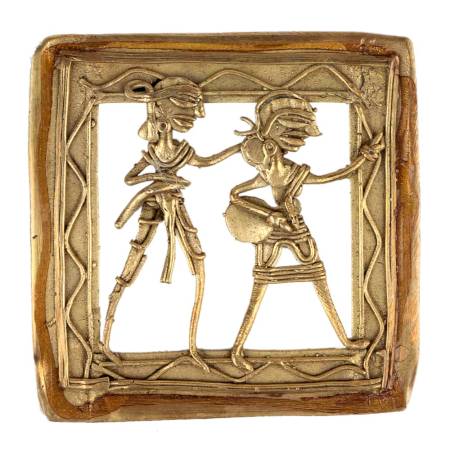


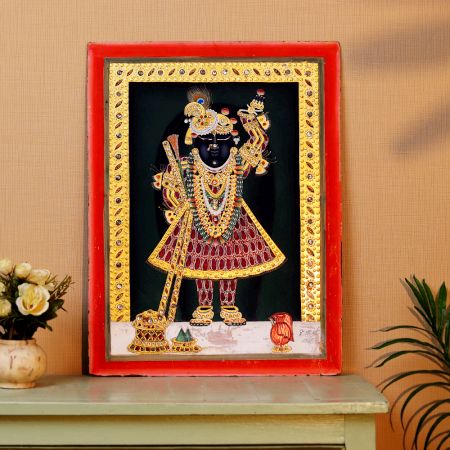


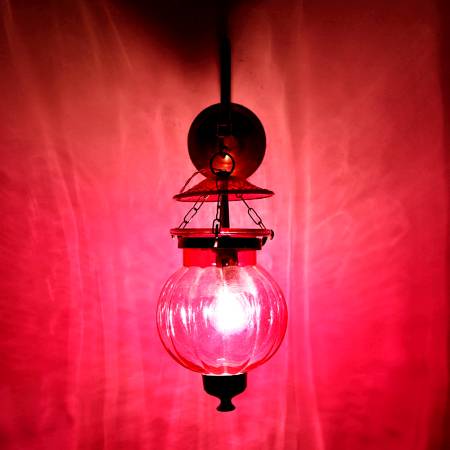

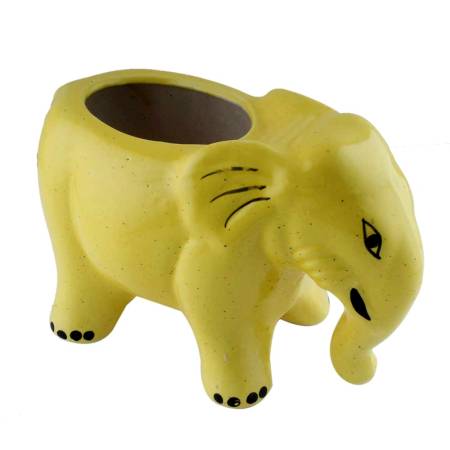
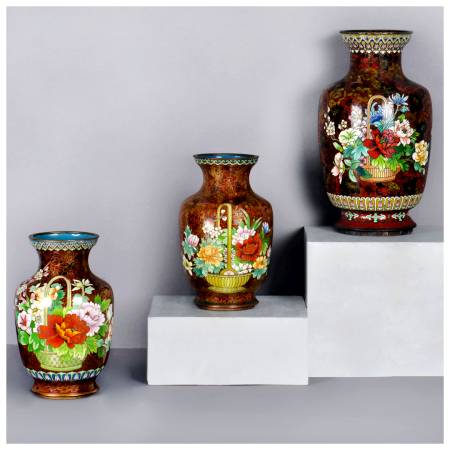
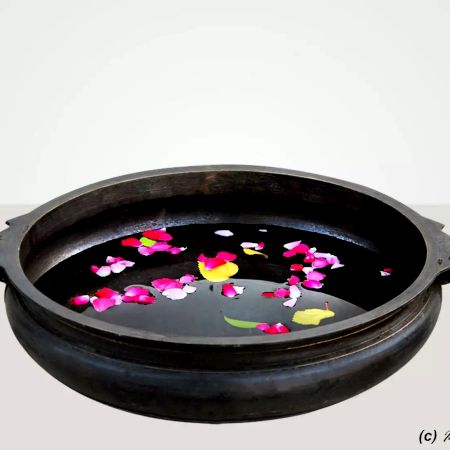
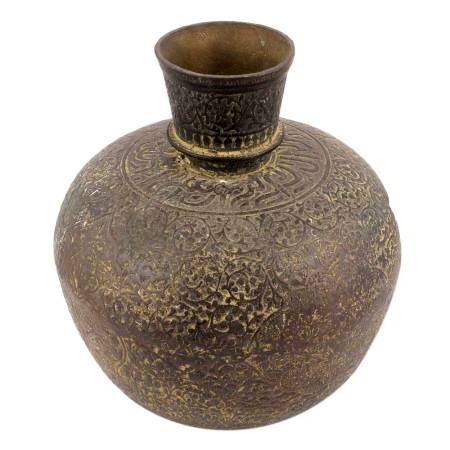
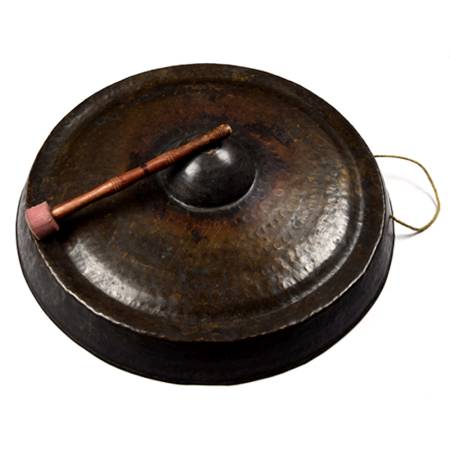
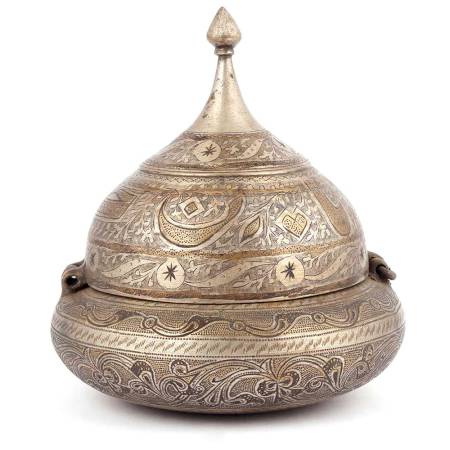

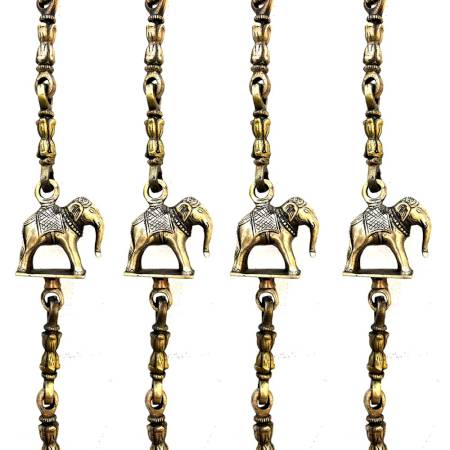
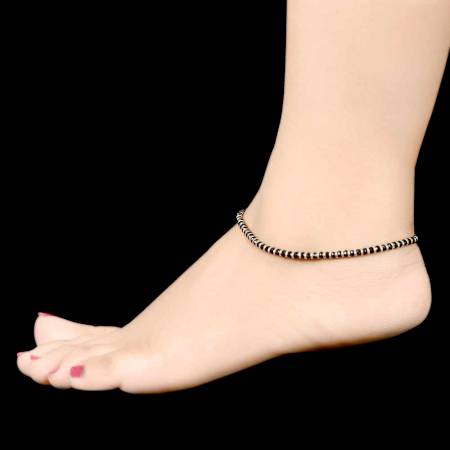
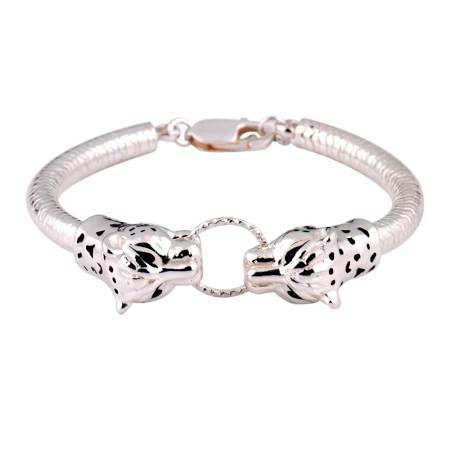
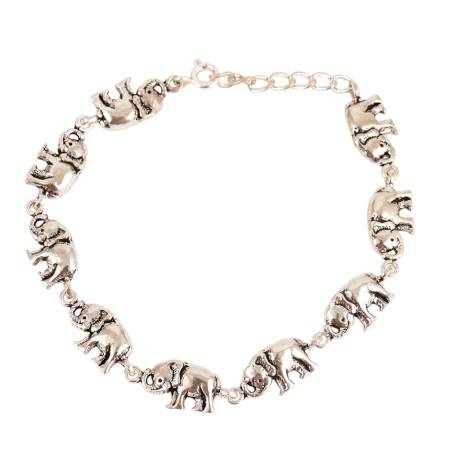
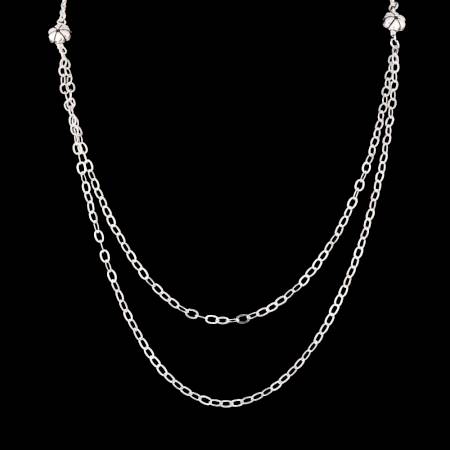

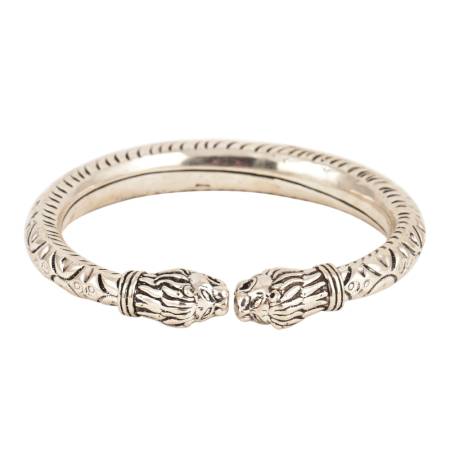


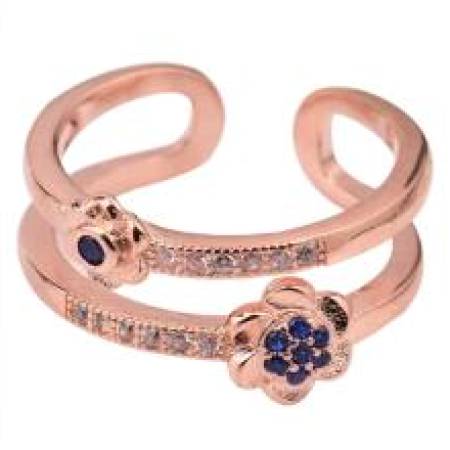
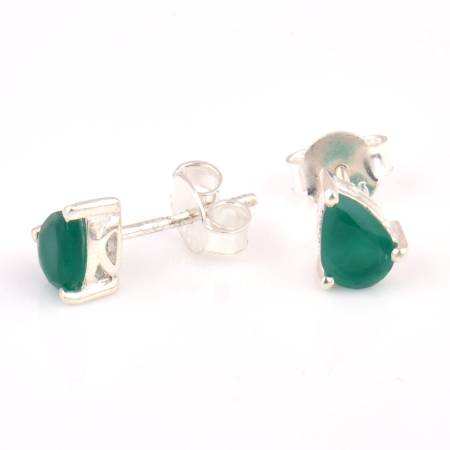

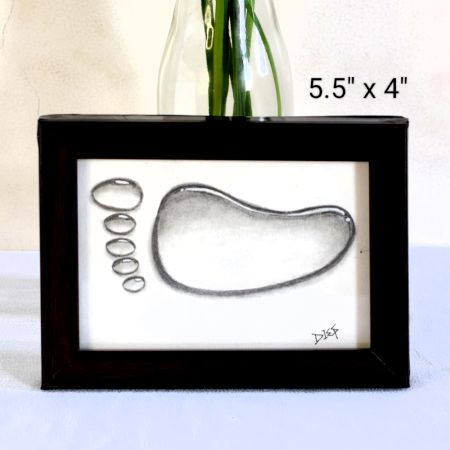
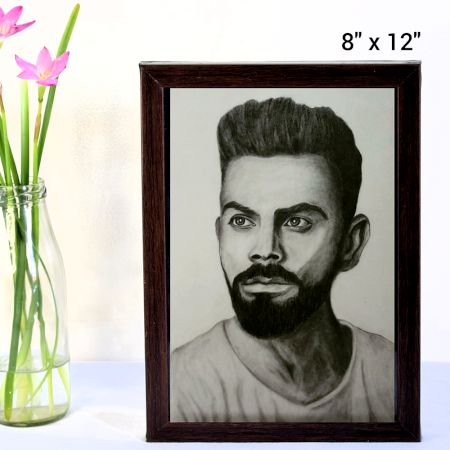
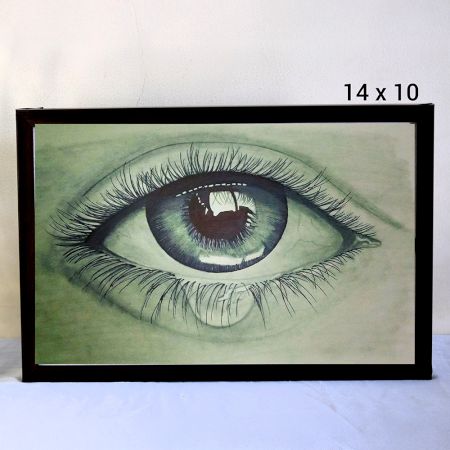
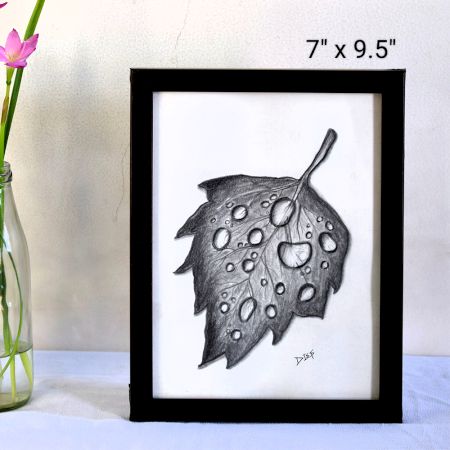
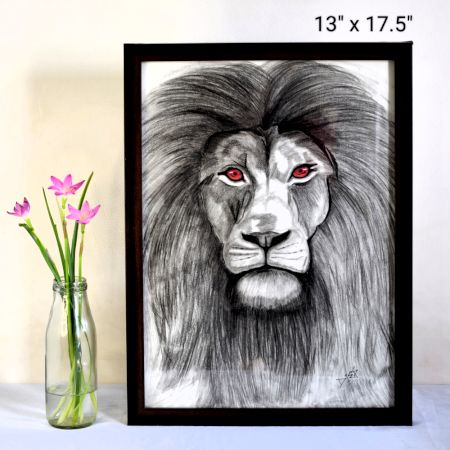
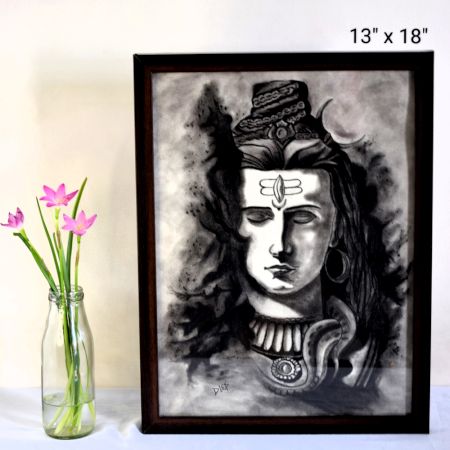
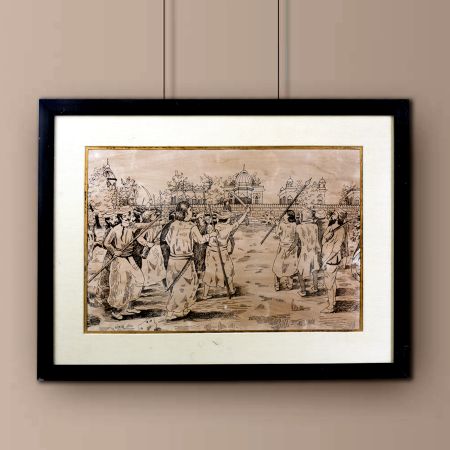
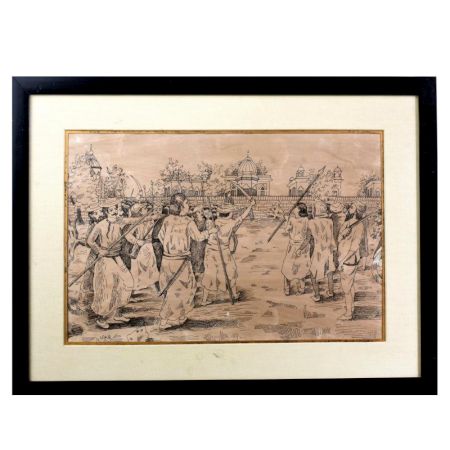
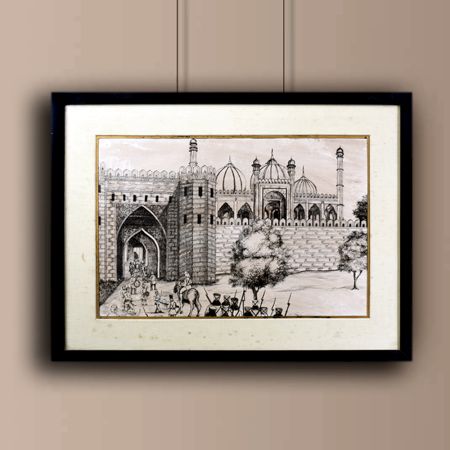
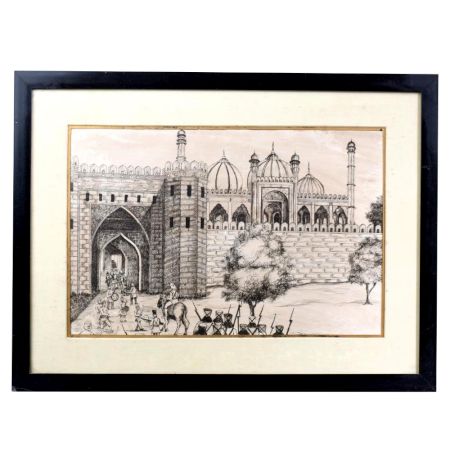







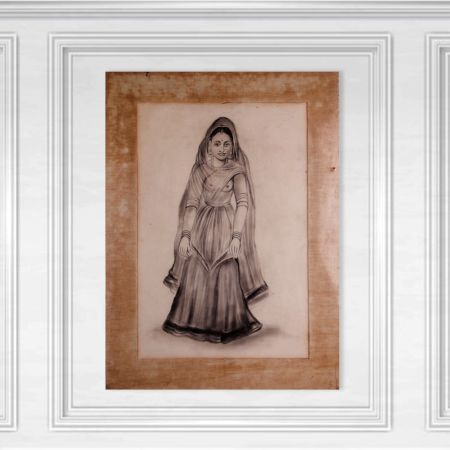

.jpg?ver=1.7)
.jpg?ver=1.7)
.jpg?ver=1.7)
.JPG?ver=1.7)
.JPG?ver=1.7)
.JPG?ver=1.7)
.JPG?ver=1.7)
.JPG?ver=1.7)
.JPG?ver=1.7)
.JPG?ver=1.7)
.JPG?ver=1.7)
.jpg?ver=1.7)
